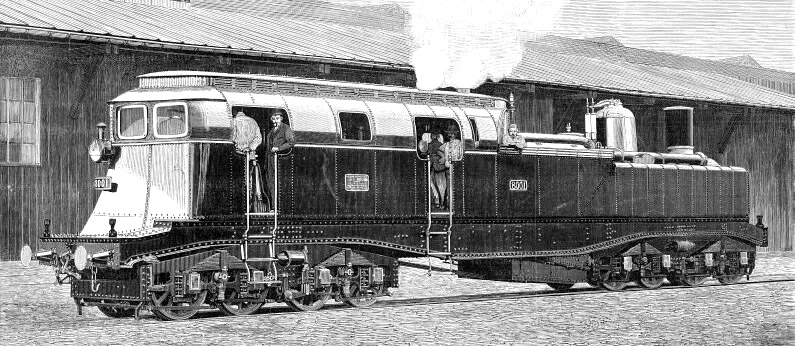A daily updated blog typed by someone with painty hands, oil under his fingernails and the smell of solder in his nostrils who likes making all sort of models and miniatures. And fixing things.
Saturday, November 03, 2012
The Heilmann locomotive
Wikiepedia is a dangerous thing. There I was looking something up when I spotted this photo at the side of the page. A couple of clicks later, proper work has stopped while I learn more.
The locomotive is a steam-electric engine, one of two built in 1897 built for French railways. A steam engine, which was built less than 20 miles from where I sit, turns a generator which powers electric motors in the bogies. Just like a diesel-electric but powered by coal.
There are lots of things I like about this engine. The wedge shaped front for example. It obviously ran "cab forward", allowing the crew the sort of superior visibility not to be seen for many years.
I like the concept too. In my head I can even conceive of making a real version. A small proprietary steam engine turning an electric motor to act as a generator wired to motors in the bogies. That shouldn't be too difficult should it ?
I also wonder why Bulleid never considered this for the Leader? It would have avoided all the problems associated with the enclosed cylinders and leaky steam pipes.
Read the Wikipedia entry on the Heilmann Locomotive
Labels:
Prototype Pictures - Railway
Subscribe to:
Post Comments (Atom)

1 comment:
Mention of these locomotives is also given in 'A manual of Locomotive Engineering' by Pettygrew,W,F. & Ravenshear, A,F. A good general description is given with some useful major dimensioning,pp358-359, 1st. Ed. For the accomplished model steam engineer this might be an interesting challenge especially in the larger sizes of one or one and a half inches to the foot, ie. 5 inch or 71/4 inch gauge. For the electric side of things, traction and control has been discussed quite exhaustively in the 'Sparks 'n' Arcs' segment of 'Australian Model Engineer' as they are applied to model diesel electric locomotives.
Post a Comment